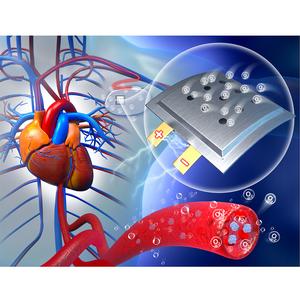I’m down for technology making use of otherwise-unused energy is great. But that prompts the question – is the oxygen it’s pulling from unused energy? Could this negatively affect the oxygenation of blood?
Probably. But if it means that you can have a lifetime heart pacemaker without ever changing batteries or external charging ports, that may be convenient. I mean, the tradeoff here is probably for people that are worried about more severe things than being a bit slower when jogging.
That’s a fair point. I suppose it depends on how much oxygen it takes, exactly.
Exactly. It depends on the option.
And how well oxygenated the person is. If they’re chronically really anemic it might be a problem where it wouldn’t for a healthy person.
Doesn’t a pacemaker last like 10 years now? It would still need battery I guess even though it charges by blood oxygen. Imagine having carbon monoxide poisoning but what killed the patient was the pacemaker that died.
Doesn’t a pacemaker last like 10 years now?
Yes, but a nuclear pacemaker can last a lifetime.
A bio-battery has that same advantage without containing a radioactive sample that needs to be removed when you die.
How long until it’s turned into a weapon
Or how long until this powers computers with advanced AI
Let’s uh all take an AI safety class before we make an AGI that survives off the oxygen from human blood.
MANKIND IS DEAD.BLOOD IS FUEL.HELL IS FULL.I DO NOT HAVE DADDY ISSUES, I AM PAPA’S SPECIAL FUCKING BOY!
horizon zero dawn theme starts playing
A robotic symbiont
More like a parasite since it’s competing with the rest of your body for that oxygen.
Presumably doctors would only implant a device which benefits the patient.
“Presumably”
Off to [email protected]…
Yes but does it benefit the device?
deleted by creator
And which doctor is prescribing it?
deleted by creator
Put them in my hands so I can just charge my phone by holding it.
Also, if someone has a heart attack and needs defibrillation, I’ll have it covered.
I like your thinking but I doubt it will work in its current state.
The researchers then implanted the battery under the skin on the backs of rats and measured its electricity output. Two weeks later, they found that the battery can produce stable voltages between 1.3 V and 1.4 V, with a maximum power density of 2.6 µW/cm2. Although the output is insufficient to power medical devices, the design shows that harnessing oxygen in the body for energy is possible.
2.6 µW/cm2.
Harvesting the energy from vibrations would probably generate more ( ͡° ͜ʖ ͡°)
Yeah but who’s gonna masturbate the mice?
2.6 microwatts per cm^2 of what? Surface area of anode/cathode in the battery? Summary does not say.
Can’t wait to see the inevitable repeat of the Samsung exploding battery debacle.
Does it involve plugging myself into the Matrix. I can’t wait until the AI uses humans as a power source
We’re a very impractical power source. Better to wipe us out and start over.
Should be called Vampire
runs out of oxygen to charge and passes out
I’ve heard this sort of thing 1000 times before, and so far it never materialises.
One step closer to Roland’s battle drug implants from After The Revolution by Robert Evans.
parasites is what they are
Symbiont’s is closer to it, since the host gets a benefit. At least for now …















